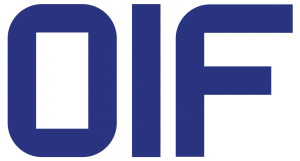OIF Launches the Industry’s First Co-Packaging Standard – the 3.2T Co-Packaged Module Implementation Agreement
Organization’s first project under the umbrella of the Co-packaging Framework Document
Fremont, Calif.—April 5, 2023 – OIF, celebrating 25 years of getting the optical networking industry’s interoperability work done, continues to be at the forefront of the industry, promoting collaboration and coordination among different players in the supply chain and driving efforts to foster a co-packaging ecosystem to support innovative applications.
An industry-first, the OIF-Co-Packaging-3.2T-Module-01.0 – Implementation Agreement for a 3.2Tb/s Co-Packaged (CPO) Module defines a 3.2T co-packaged module that targets Ethernet switching applications utilizing 100G electrical lanes and provides backward compatibility with 50G lanes. The module definition can be in the form of an optical module or a passive copper cable assembly and provides ~140G/mm of bandwidth edge-density. It can enable optical and/or electrical interfaces for a 51.2Tb/s aggregate bandwidth switch.
“OIF’s members are committed to driving innovation and progress in co-packaging, continuously seeking ways to improve and innovate,” said Jeff Hutchins, OIF PLL Working Group Co-Packaging Vice Chair and Board Member, Ranovus. “This IA is part of a trio of projects which include the Framework project and the External Laser Small Form Factor Pluggable (ELSFP) project. Building on OIF’s successful track record of coherent and laser module IAs, it addresses the market need for interoperable integrated optics standardization identified by the CPO Framework IA.”
The new IA includes interoperability specifications for the 3.2 Tb/s CPO modules, including:
- 8x400Gb/s optical interface options for FR4 and DR4 connectivity
- 32 x CEI-112G-XSR host interface (or 32 x CEI-56G-XSR in “backwards compatible” mode)
- Opto-mechanical module specifications
- Electrical specifications
- Control and management interface, enabled by enhancements to the existing OIF CMIS specification
“Considerable progress has been made in co-packaging, and this new IA, along with a collaborative ecosystem, is a critical piece to propel the technology so that it meets industry needs, including that of Cloud service providers as they build their next-generation AI networks,” said Richard Ward, Technical Editor of the OIF 3.2T Co-Packaged Module IA, Astera Labs.
At OFC 2023 in March, OIF revealed its progress in co-packaging specifications in a set of interoperability demonstrations. The demos included pivotal multi-vendor elements to enable co-packaging architectures, including live demos for the External Laser Small Form Factor Pluggable (ELSFP) external laser source form factor, co-packaged 3.2T copper cable assemblies, an operating linear optical module, and a variety of optical connectivity solutions as well as an expanded set of OIF member participants representing the growing ecosystem.
About OIF
OIF is where the optical networking industry’s interoperability work gets done. Celebrating 25 years of effecting forward change in the industry, OIF represents the dynamic ecosystem of 140+ industry leading network operators, system vendors, component vendors and test equipment vendors collaborating to develop interoperable electrical, optical and control solutions that directly impact the industry’s ecosystem and facilitate global connectivity in the open network world. Connect with OIF at @OIForum, on LinkedIn and at http://www.oiforum.com.
PR Contact:
Leah Wilkinson
Wilkinson + Associates for OIF
703-907-0010

